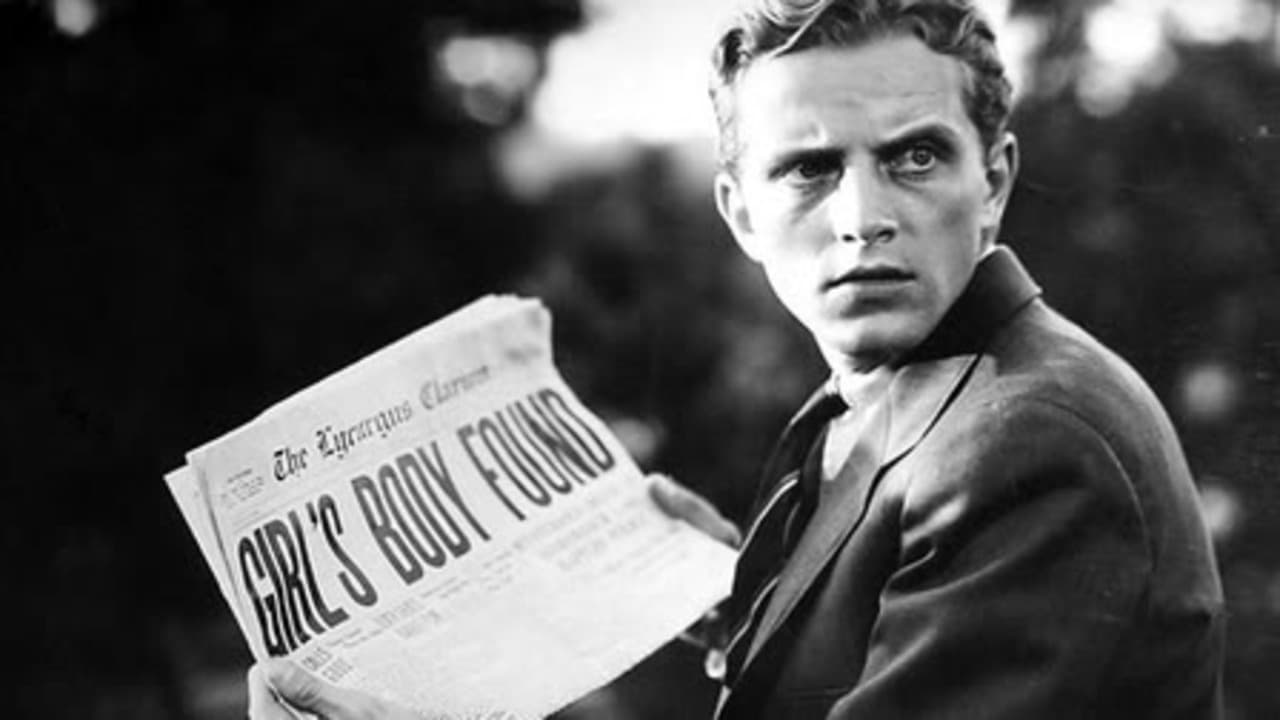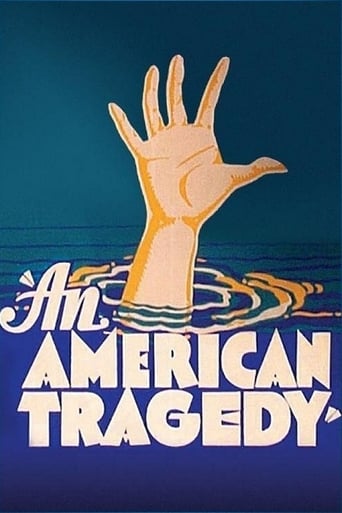

Like all the studios Paramount did not believe in idle hands. In between Marlene Dietrich projects, Josef Von Sternberg got assigned to do this adaption of Theodore Dreiser's novel An American Tragedy. Of course Paramount's second adaption of this story A Place In The Sun is far better known.Paramount was never known as a studio which did films with a message of social significance. Interesting to speculate what the results would have been had this been done at Warner Brothers. Von Sternberg did do a good piece of film making. But the story died at the box office. I suppose the story of a man trying to marry upward to secure a better place in society and the tragedy resulting just wasn't of interest to Depression audiences.Whether it was or it wasn't Paramount sold the next one with sex, the love story of Montgomery Clift and Elizabeth Taylor heating up the screen. That went over big in 1951.In this story Phillips Holmes is the ne'er do well relative of factory owner Samuel Griffiths who gives him a job in his factory, but keeps him at a distance socially. More than anything else Holmes wants acceptance from the upper crust.At the factory he drifts into an affair with fellow worker Sylvia Sidney, but when he sees rich Frances Dee she's the ticket to all he's ever wanted. But Sylvia's now pregnant, what's a guy to do?Dreiser's thoughts about class and class distinction are carefully preserved here. Yet in the most class conscious era in American history this didn't go over with the public. I guess even in those times you need a little sex to get people to the box office.All the leads performed well and I also would commend Irving Pichel as the prosecuting attorney. This part was also a milestone for Raymond Burr who did it in A Place In The Sun.An American Tragedy holds up well for today's audience which is also thinking about class distinctions and upward mobility today.
... View MoreIt's interesting to compare this precode era adaptation to the glossier seemingly bigger-budget production, 1951's "A Place in the Sun". People today will likely not remember the stars since so much of their work was done at 1930's Paramount and is never shown anymore. Practically all of the action is centered on working class girl Roberta (Sylvia Sidney) and Clyde Griffiths (Phillips Holmes), who wants what he wants when he wants it. Frances Dee as the rich girl Clyde falls for later in the film barely gets any lines at all as compared to Elizabeth Taylor in the corresponding part in the 1951 film. In fact the whole tale is spartanly told. Clyde's past is filled in more in this film, along with more about his mother and the fact that she realizes she failed Clyde by concentrating so much on her mission work and thus exposing Clyde to all of the darkness in life with none of the normal attention and happinesses that most children experience, thus making Clyde selfish and hungry for the good things in life. Clyde gets a break when he runs into the wealthy side of the family, gets a job in their factory, and ultimately works his way up to supervisor. But the family is more oblige toward him than noblesse, as they invite him up to visit them at their house - more for the sake of appearances than anything - and study him like a specimen rather than treat him like a guest. Through all of this, Clyde is stoic and unsurprised at their behavior. You get the feeling he'd do the same if he was in their place.Clyde selfishly but not maliciously pushes Roberta, one of the assembly line girls in his charge, into a relationship and ultimately into sharing a bed, and apparently this intimate relationship goes on some time until he meets a bigger better deal in the person of Sondra Finchley. Don't expect the sizzle and warmth of Montgomery Clift and Elizabeth Taylor here. Here Frances Dee and Philips Holme barely smolder, but that is probably intentional just to feed the impression that this guy truly can't love anybody. Here Roberta is an unlucky girl that you grow to like as you even meet her family at one point. In Place in the Sun Shelley Winter's rendition is that of a clawing nagging harpy, causing you to somewhat sympathize with Clyde. Here there can really be no sympathy for the guy - he really is a coward, always trying to get what he can out of life here and now, running from the consequences, lying to himself as well as everyone else.When the pregnant Roberta refuses to just disappear and insists on marriage, Clyde tears himself away from his summer vacation with his new socialite girlfriend long enough to plan a murder that will look like an accidental drowning. Does he want the good things in life enough to do even the foulest of deeds? Watch and find out. And you will find out, because what happens in the boat is clearly shown from beginning to end.One very interesting moment in this film not included in the remake: You see the jury deliberate and two jurors are tending toward voting not guilty. The other ten threaten the two holdouts, basically saying that they will find it impossible to make a living in that town if they "side with that murderer". In the production code era you would never be allowed to question the integrity of the criminal justice system in such a manner. This film is an interesting commentary on class consciousness centered on a wrong guy ultimately brought to accidental justice by an equally wrong criminal justice system. Highly recommended.
... View MoreIts time this well acted and good story older little known gem to be released on DVD. I saw it on TV years ago but never saw it again. It was made in 1931 and the mores of the day are outdated, but the story and consequences could be the same today as they were then. The acting is well done with Phillips Holmes as the male star Clyde. Holmes died when he was only 35 in a plane collision, cutting short a promising life and film career. Sylvia Sydney plays the part of Clyde's very pretty girlfriend Roberta. Everything goes well till Roberta finds herself in a situation she doesn't want to be in and for sure, Clyde doesn't want her to be in. Clyde has big plans for his job, he is ambitious but also selfish. He begins to feel trapped and thinks what he can do to be free of the situation as he doesn't want to be held back. So he plans a solution which has sad consequences and doesn't work out the way he planned. The movie is close to Theodore Dresser's book of "An American Tragedy". The acting is well done by the two stars. I was surprised that a movie made in 1931 could be so good. It didn't seem out of date at all to me. In my view, the acting of the stars in the 1931 film and the movie itself is a lot better than the remake called "A Place in the Sun" with Clift Montgomery and Elizabeth Taylor.I think a lot of classic type film buffs would like this movie. I'd be the first to get it on DVD.
... View MoreNot having read the book, nor seen the Taylor remake, I had no bias when I watched this film the other night on French television. I almost turned it off after the first 20 minutes, it was slow to start and seemed to be going nowhere. However I stuck with it and it was worth it in the end. The court scene was too long and the histrionics of the defence and the prosecution over the top, but I found the characters believable and became involved in the fate of Clyde. Not a film I would want to keep as a classic, but definitly worth watching.
... View More